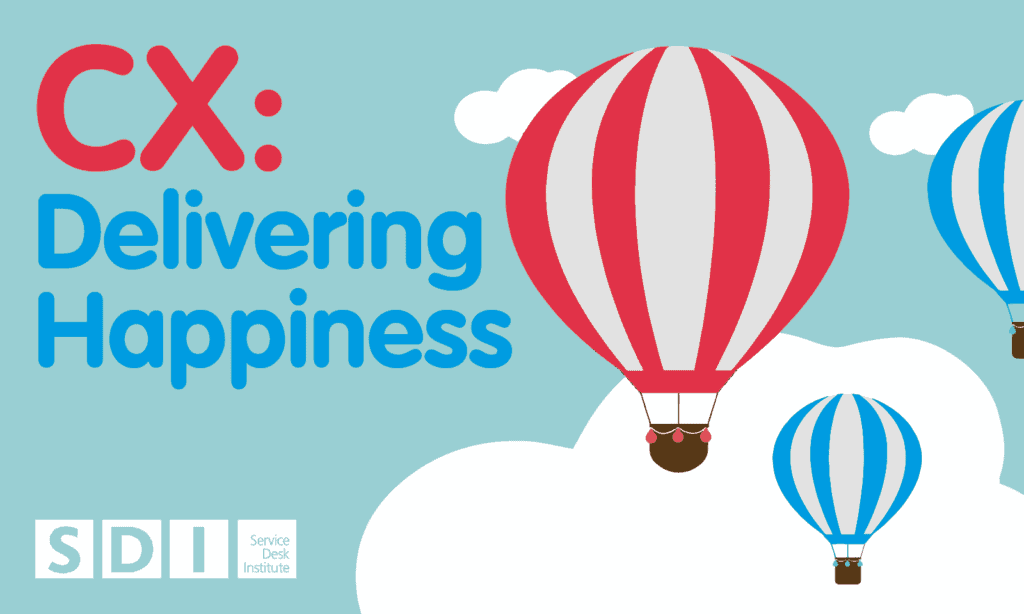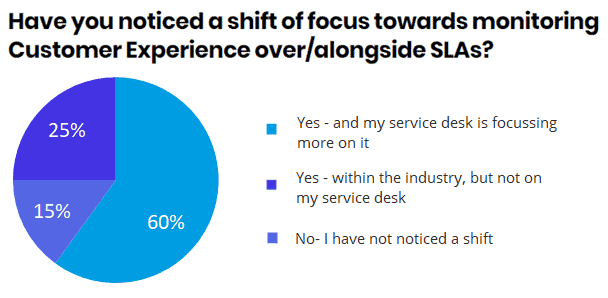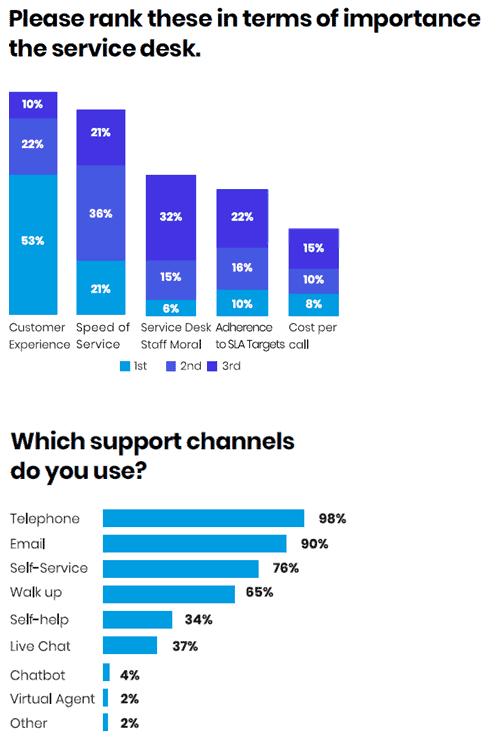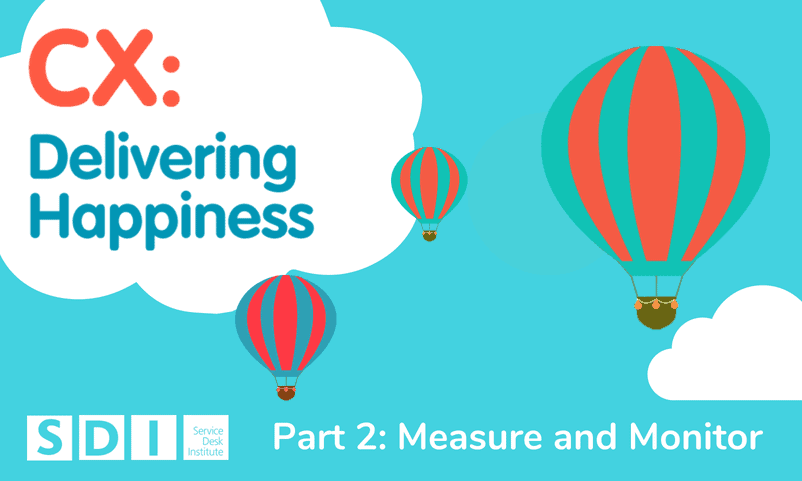
CX: Delivering Happiness
SLA’s are vital to documenting customer requirements, KPI’s firmly have their place in service performance monitoring, but make sure you don’t fall into the data trap! The trap which involves losing sight of the ultimate aim behind any good service; not only to recognise that your focus is on the customer, but remembering to deliver a great experience, remembering to deliver happiness.
The ‘CX: Delivering Happiness’ Series is all about the shift in the ITSM industry which is beginning to steer the focus away from traditional metrics and towards recognising the significance of the customer experience. It will focus on everything from the ‘why’ and ‘how’ to measure CX, what affect it will have on service desks in the future, and even ways to take part in upcoming industry opportunities, ensuring you don’t get left behind. Part 1 examines the importance of the customer experience and why service desks are beginning to focus on it.
These concepts are explored further inside the ‘Customer Experience in ITSM’ report. Download it at the bottom of this page!
Part 1: Happiness as a Service
Customer satisfaction (CSAT) has long been an important metric for service desks, and recent SDI research has shown that 60% of service desk professionals find more value in CSAT measures than traditional metrics, such as first-time fix or resolution time, and 75% have noticed a shift towards monitoring CX over or alongside SLA targets.

This is indicating that there has been a shift within the industry; a greater focus is being placed on customers’ experience of the service and service desk. The subtle difference is that while CSAT focuses on how satisfied the customer is with one particular interaction with the service desk, CX is more proactive in encouraging service desk staff to build relationships with customers to promote loyalty and a positive perception of the service.
Our research shows that over half of service desk professionals rank CX as the most important option for their service desk.
 But why are we seeing this? Customer service in the consumer world is evolving rapidly, be it through implementing new products, services, technologies, or even frameworks, all of which are devised to improve the experience customers have when engaging with consumer services. Customers then come to expect similar levels of customer service and a better overall experience of the services they are provided in a working environment. At some point, corporate business IT departments will need to develop their approach and use customer feedback to improve the service they provide. When done well, this can elevate the customer experience as a whole, as well as improve the perception and profile of the service desk.
But why are we seeing this? Customer service in the consumer world is evolving rapidly, be it through implementing new products, services, technologies, or even frameworks, all of which are devised to improve the experience customers have when engaging with consumer services. Customers then come to expect similar levels of customer service and a better overall experience of the services they are provided in a working environment. At some point, corporate business IT departments will need to develop their approach and use customer feedback to improve the service they provide. When done well, this can elevate the customer experience as a whole, as well as improve the perception and profile of the service desk.
Measuring Multiple Support Channels; With around 76% of respondents highlighting that they have a self-service support channel, and smaller proportions specifying they use self-help, chatbots, and virtual agents, it is important to note that monitoring the customer experience of these channels can be more difficult to monitor, as there is little to no contact between a service desk analyst and the customer. Indeed, measuring first-time fix and resolution times is an indicator of success, but without knowing customers’ experience of these channels, the service desk may be blind to inefficiencies or usability issues. Monitoring and understanding customers’ experience of different channels can allow the service desk to highlight improvements that could be made, therefore improving CX and potentially increasing the customer uptake of alternative support channels.
Implications for the Service Desk and its Customers; Arguably, customers are less interested in whether their service desk met SLA targets for response time and first-time fix, i.e. more traditional metrics, particularly if their experience of the service was not enhanced as a result. Moreover, there is a fundamental flaw with setting targets for traditional measures; service desk staff may focus more on meeting these targets and avoid SLA breaches, be it by closing tickets before they are resolved, or cherry-picking tickets which are “easy fixes”, rather than focusing on the experience of the customer. CX measures, on the other hand, are almost impossible to “cheat” , with experiences being subjective to the customer. Therefore, using CX as a method of demonstrating value and success may be more meaningful and impactful for the business.
Furthermore, excellent customer experience can build a community of customer advocates who can influence and promote services or processes to the business. Fostering an environment where the customer is at the centre of the service can also lead to more a meaningful service and happier customers, and this can be relayed to the business as an indicator of value and success.
In the near future, the traditional SLAs the service desk and its customers are familiar with may shift to focus more on the customer experience. While traditional measures are still essential for monitoring your service desk’s performance, perhaps merging these two approaches and measuring both service desk performance and service quality may become the norm.
Take a look at SDI’s thought leading virtual XLA event on 2 February 2022 and CX WORKSHOP to discover how to drive customer-centric service improvement and define an end-to-end approach to managing your customers’ experiences.
These topics are discussed in more detail inside the Customer Experience in ITSM report>>
(this link will send the CX report straight to your downloads so please check there!)



























